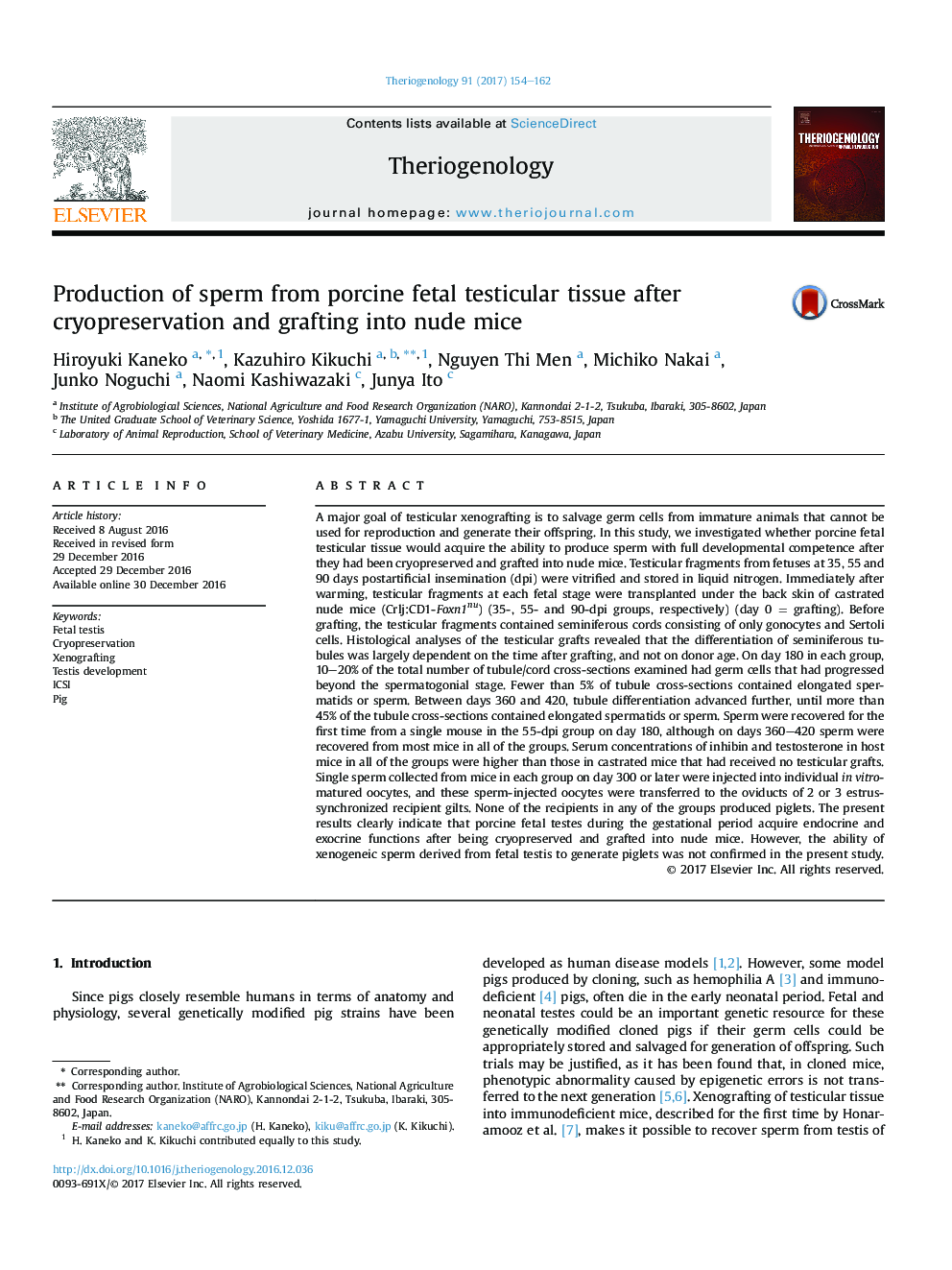| کد مقاله | کد نشریه | سال انتشار | مقاله انگلیسی | نسخه تمام متن |
|---|---|---|---|---|
| 5523491 | 1546078 | 2017 | 9 صفحه PDF | دانلود رایگان |
A major goal of testicular xenografting is to salvage germ cells from immature animals that cannot be used for reproduction and generate their offspring. In this study, we investigated whether porcine fetal testicular tissue would acquire the ability to produce sperm with full developmental competence after they had been cryopreserved and grafted into nude mice. Testicular fragments from fetuses at 35, 55 and 90 days postartificial insemination (dpi) were vitrified and stored in liquid nitrogen. Immediately after warming, testicular fragments at each fetal stage were transplanted under the back skin of castrated nude mice (Crlj:CD1-Foxn1nu) (35-, 55- and 90-dpi groups, respectively) (day 0 = grafting). Before grafting, the testicular fragments contained seminiferous cords consisting of only gonocytes and Sertoli cells. Histological analyses of the testicular grafts revealed that the differentiation of seminiferous tubules was largely dependent on the time after grafting, and not on donor age. On day 180 in each group, 10-20% of the total number of tubule/cord cross-sections examined had germ cells that had progressed beyond the spermatogonial stage. Fewer than 5% of tubule cross-sections contained elongated spermatids or sperm. Between days 360 and 420, tubule differentiation advanced further, until more than 45% of the tubule cross-sections contained elongated spermatids or sperm. Sperm were recovered for the first time from a single mouse in the 55-dpi group on day 180, although on days 360-420 sperm were recovered from most mice in all of the groups. Serum concentrations of inhibin and testosterone in host mice in all of the groups were higher than those in castrated mice that had received no testicular grafts. Single sperm collected from mice in each group on day 300 or later were injected into individual in vitro-matured oocytes, and these sperm-injected oocytes were transferred to the oviducts of 2 or 3 estrus-synchronized recipient gilts. None of the recipients in any of the groups produced piglets. The present results clearly indicate that porcine fetal testes during the gestational period acquire endocrine and exocrine functions after being cryopreserved and grafted into nude mice. However, the ability of xenogeneic sperm derived from fetal testis to generate piglets was not confirmed in the present study.
Journal: Theriogenology - Volume 91, 15 March 2017, Pages 154-162
